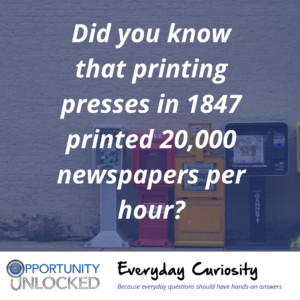 Getting information matters. One reason why the internet is so powerful is that we can find out about newsworthy events immediately as they happen. But it has not always been that way. Before the internet, most people got their news from newspapers.
Getting information matters. One reason why the internet is so powerful is that we can find out about newsworthy events immediately as they happen. But it has not always been that way. Before the internet, most people got their news from newspapers.
Newspapers need to be printed cheaply and quickly. Even though the printing press was invented in 1440, it wasn’t until the 1800s that printing technology had advanced enough to print daily newspapers. Early printing presses used a flat plate that worked a lot like a big stamp. In the 1830s, inventors started experimenting with cylindrical presses that allowed paper to roll through the machine. This technology drastically reduced the cost of newspapers, allowing publishers of the New York Sun to sell their paper for a penny an issue. The rotary printing press invented by Richard Hoe in 1847 could produce 20,000 newspapers per hour. Hoe received 24 patents between 1842 and 1874 for printing press improvements.
Modern newspapers are printed in color by creating plates for 4 separate colors (black, cyan, yellow, and magenta). Each plate is made from aluminum covered by a plastic coating. Did you know that paper can move through a modern press at nearly 25 miles per hour? Even as more and more people read news delivered over the internet, major US newspapers still circulate over 2 million copies every day.
Everyday Curiosity is a weekly magazine for kids aged 8-14 that explores math, science, and engineering. Each issue asks one big question and has three related hands-on projects to go deeper into the math, science, and engineering behind everyday observations. The projects use supplies that are already in the house or could be found easily at a grocery store, general department store, or (in rare cases) a hardware store.

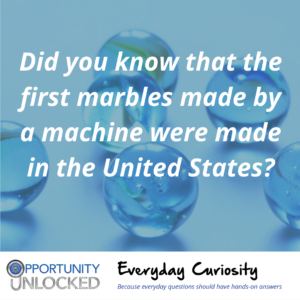 So many games can be played with small round balls. We don’t really know who invented marbles because kids have probably always played with nuts, rocks, and small balls made from all kinds of other materials. But did you know that many marbles are made of glass?
So many games can be played with small round balls. We don’t really know who invented marbles because kids have probably always played with nuts, rocks, and small balls made from all kinds of other materials. But did you know that many marbles are made of glass?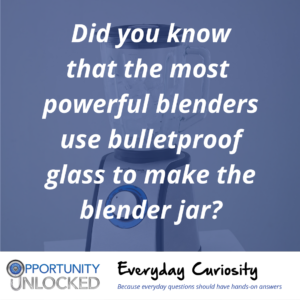 When I think about the perfect smoothie or milkshake, I think of a thick frozen river right on the verge of flowing. I love being able to use a spoon or a straw to enjoy my milkshake. Every morning, I make a smoothie before leaving the house.
When I think about the perfect smoothie or milkshake, I think of a thick frozen river right on the verge of flowing. I love being able to use a spoon or a straw to enjoy my milkshake. Every morning, I make a smoothie before leaving the house.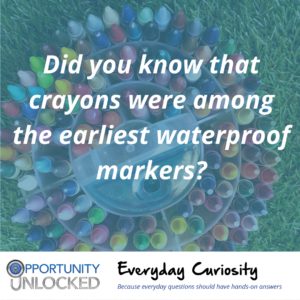 I like coloring with crayons because so many different crayon colors exist. Did you know that crayons were used as a kind of waterproof marker? Edwin Binney and Harold Smith, the inventors behind Crayola crayons, combined paraffin wax with their carbon black pigment to make black crayons.
I like coloring with crayons because so many different crayon colors exist. Did you know that crayons were used as a kind of waterproof marker? Edwin Binney and Harold Smith, the inventors behind Crayola crayons, combined paraffin wax with their carbon black pigment to make black crayons. Traffic lights help us stay safe by telling us when we can cross the street. Many traffic lights are signals for drivers and pedestrians alike. Ever since more and more people moved into cities, inventors have worked to reduce the number of traffic accidents.
Traffic lights help us stay safe by telling us when we can cross the street. Many traffic lights are signals for drivers and pedestrians alike. Ever since more and more people moved into cities, inventors have worked to reduce the number of traffic accidents.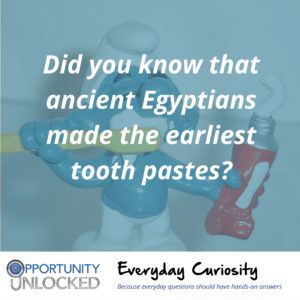 Our teeth transform each bite of food into something that can be swallowed. Humans have always noticed that food can get stuck between our teeth and have invented diverse ways to to clean our teeth. Did you know that ancient Egyptians made the earliest tooth pastes?
Our teeth transform each bite of food into something that can be swallowed. Humans have always noticed that food can get stuck between our teeth and have invented diverse ways to to clean our teeth. Did you know that ancient Egyptians made the earliest tooth pastes?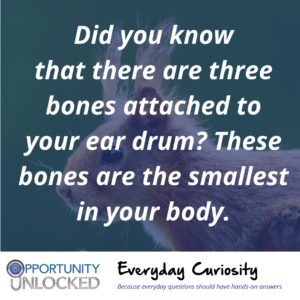 Our ears are incredible sound detection machines. Sound enters through the outer ear and travels through the ear canal. The sound wave hits the ear drum causing the ear drum to vibrate. Did you know that there are 3 small bones attached to your ear drum? When your ear drum vibrates, it causes these bones to vibrate as well. The bones transfer the vibration from the ear drum to the cochlea, or the inner ear. The cochlea looks like a spiral snail shell, and it is filled with fluid. The vibrations move through the fluid. Eventually the vibration gets all the way to the center of the spiral, named the organ of Corti, that has hair cells inside. The vibration causes the hair cells to move, which sends signals through the auditory nerve. The brain decodes the signal to the auditory nerve so we can make sense of what we are hearing.
Our ears are incredible sound detection machines. Sound enters through the outer ear and travels through the ear canal. The sound wave hits the ear drum causing the ear drum to vibrate. Did you know that there are 3 small bones attached to your ear drum? When your ear drum vibrates, it causes these bones to vibrate as well. The bones transfer the vibration from the ear drum to the cochlea, or the inner ear. The cochlea looks like a spiral snail shell, and it is filled with fluid. The vibrations move through the fluid. Eventually the vibration gets all the way to the center of the spiral, named the organ of Corti, that has hair cells inside. The vibration causes the hair cells to move, which sends signals through the auditory nerve. The brain decodes the signal to the auditory nerve so we can make sense of what we are hearing. Awards are a great way to encourage people to put forth their best efforts. It is common to give medals and trophies. As we think about recognizing achievements, we also can learn a lot about the materials we use to make the awards.
Awards are a great way to encourage people to put forth their best efforts. It is common to give medals and trophies. As we think about recognizing achievements, we also can learn a lot about the materials we use to make the awards. Too much heat can be a dangerous thing. In order for the body to maintain its core temperature without any kind of heating or cooling, the temperature should be 82 °F. If it is hotter than that, then we need ways to keep cool.
Too much heat can be a dangerous thing. In order for the body to maintain its core temperature without any kind of heating or cooling, the temperature should be 82 °F. If it is hotter than that, then we need ways to keep cool. Competitive swimmers are incredible athletes. Swims get faster and faster, seemingly defying physics. It is possible for swimmers to harness the adrenaline of huge competitions and record personal best swims that blow world records out of the water. When swimmers are in the water, they are in a battle with friction and drag. Nearly everything a swimmer does in the water is an attempt to move through the water more efficiently. At first glance, one might not even see all of the technology in the pool.
Competitive swimmers are incredible athletes. Swims get faster and faster, seemingly defying physics. It is possible for swimmers to harness the adrenaline of huge competitions and record personal best swims that blow world records out of the water. When swimmers are in the water, they are in a battle with friction and drag. Nearly everything a swimmer does in the water is an attempt to move through the water more efficiently. At first glance, one might not even see all of the technology in the pool.